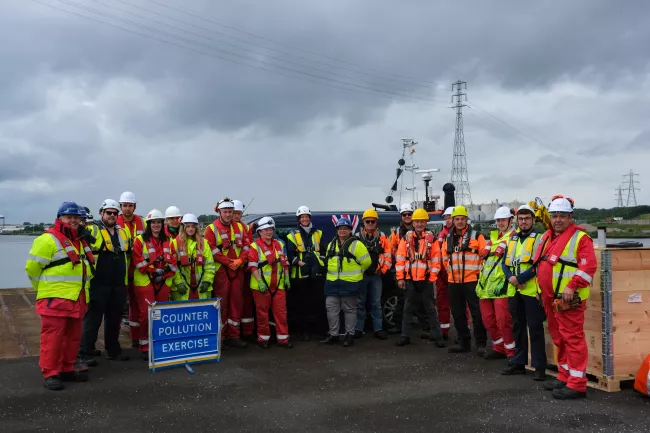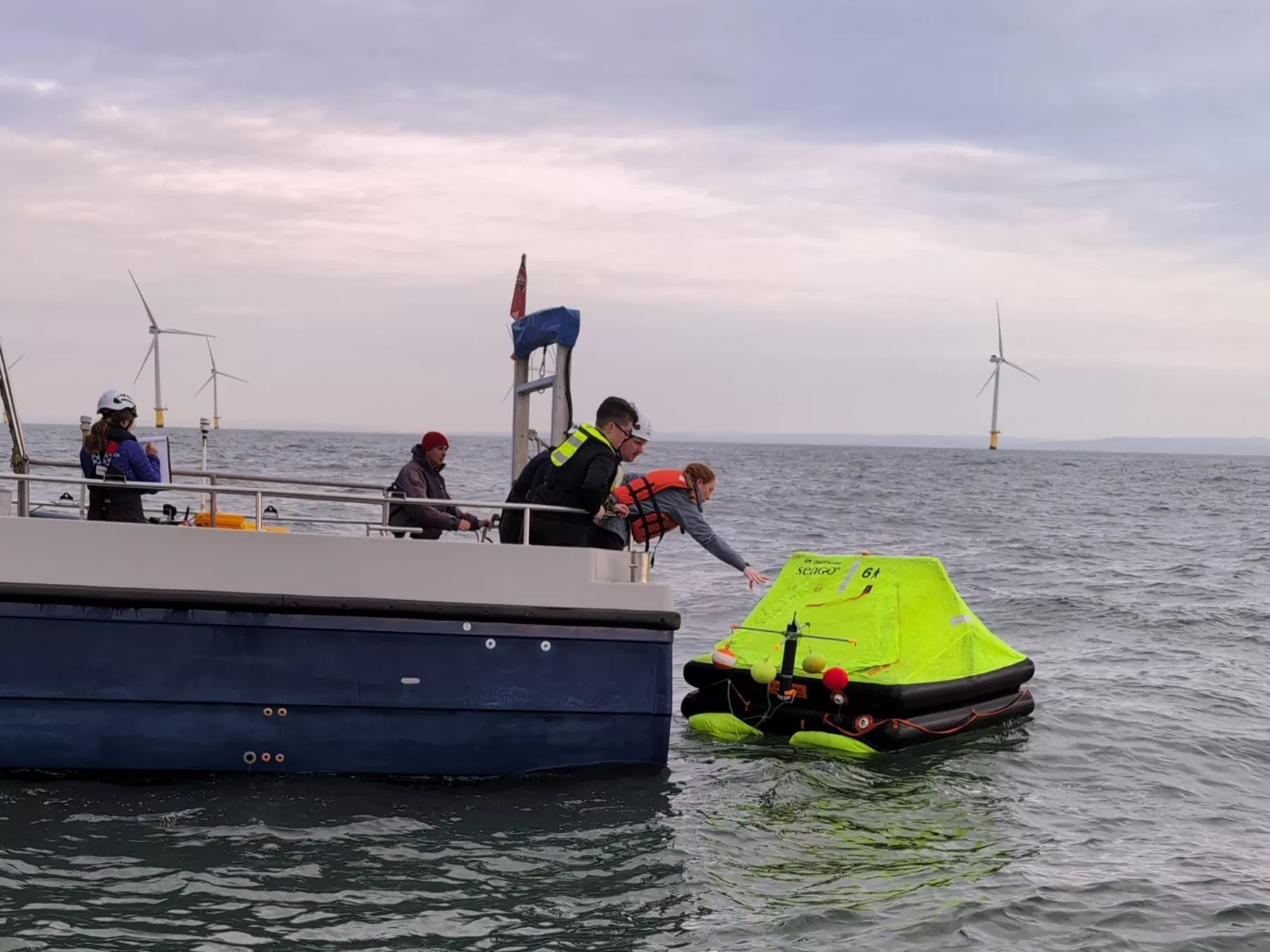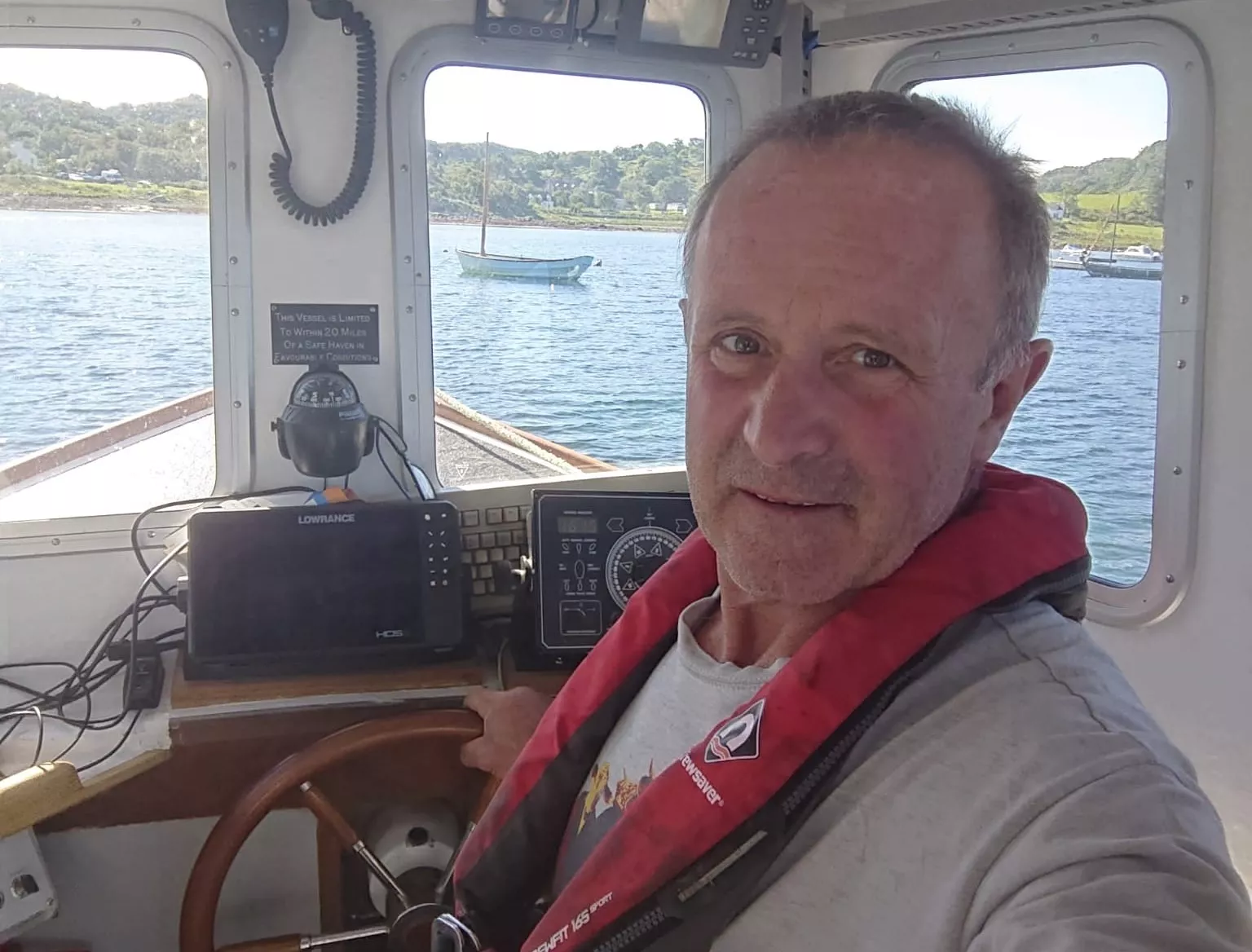On standby round the clock, it’s the counter-pollution hardware forming part of the UK’s response that can be deployed to the coast within hours if the worst happens.
For three days at the Port of Tyne, near Newcastle, the Maritime and Coastguard Agency (MCA) Counter-Pollution and Salvage team honed its preparedness with counter-pollution contractor Ambipar alongside local coastguard rescue teams, representatives from the port, and the Environment Agency.
The sight of sea birds draped in thick oil is the symbol of pollution disaster, but more recently plastic pellets (nurdles) and other hazardous substances have been threats to our coastlines.
Left unchecked, spills can work inland into creeks, harming flora and fauna, as well as polluting water worked by fishing boats and fish farms, adding economic hardship to environmental destruction.
With Ambipar as the MCA’s national pollution response contractor, teams are ready to respond with tonnes of equipment brought to a forward deployment site anywhere on the UK mainland within 15 hours to battle against toxic substances reaching sensitive areas.
At the exercise was Hazel Christie, an MCA Environmental Scientist Advisor whose job is to provide expertise on the potential spread of pollutant, methods of response, and likely impact.
She said: “This exercise is partly about having the reassurance that we have the capability and expertise to respond to a pollution incident.
“This exercise gives the contractor the opportunity to gain expertise and experience of the kit so, when the time comes, they know what to do and our response is even more effective.”
Hundreds of metres of new booms – floating barriers used to repel and gather up pollutants – were rolled out from the national stockpile for testing during the exercise at the Port of Tyne from 11-13 July, involving more than 50 people over the three days.
The first were the two Y-shaped booms – dubbed the Current Buster 6. Designed to be towed behind a boat, they are able to gather up to 70 tonnes pollution at a time, to be sucked away by skimmers and deposited into an accompanying vessel for safe treatment and disposal back on land.
The “speed bag” was next: a 200-metre foam-filled barrier launched from the back of a boat as a rapid first line of defence to draw tightly around the source of pollution, perhaps a damaged ship or a leaking wreck.
And finally, the heavy-duty big boom for full deployment at sea in about 20 minutes from a ship, providing 200 metres of inflatable chambers and a skirt below the surface to block pollution from nearing the shore.
Steve Doig, Ambipar Operations Manager, was among the team of men and women braving the wind and rain of the British summer to witness the new equipment, including systems for spreading dispersant offshore to safely break down patches of oil pollution.
He said: “It’s a refresher for the team, especially for new starters. Luckily, we do not have to get this kit out regularly, so this is a real opportunity to see and test it."

He added: “We work with HM Coastguard and we always deploy together, so it’s also about joined-up working. This exercise helps people get to know each other and work together – it's not just about using the kit, it’s about building relationships.”
The equipment is stored at three main locations up and down the UK. If the call comes, it can be despatched to incidents ranging from full-scale emergencies at sea, handled by the MCA, or to support smaller incidents, if required, such as in ports.
Observing for the Environment Agency was Stuart Hankey, an Incident Management Advisor who, depending on the severity of the incident, could be part of the team overseeing a regional or national counter-pollution response.
He said: “For us, this is partly about being able to see the scope of the national stockpile of equipment, and to understand the complexities of the kit and appreciate how we can best work as a collective – it's about response awareness and collaboration.”

Overseeing the whole operation was Jerry Connors, who is the Counter-Pollution and Salvage Resources and Claims Lead.
He said: “This is an opportunity to get out the equipment we have purchased and give people the time to rehearse deployment ahead of a real-life situation. It’s about making sure the team are as trained up as they can be.
“We have this capability for a reason and this exercise is about making sure we can do it.”



